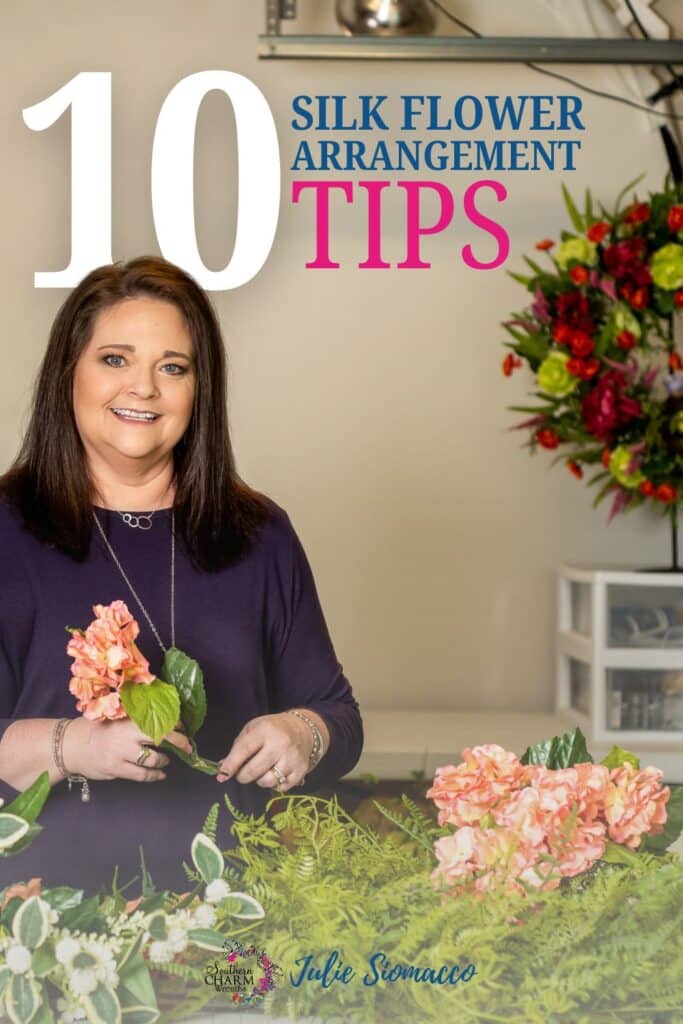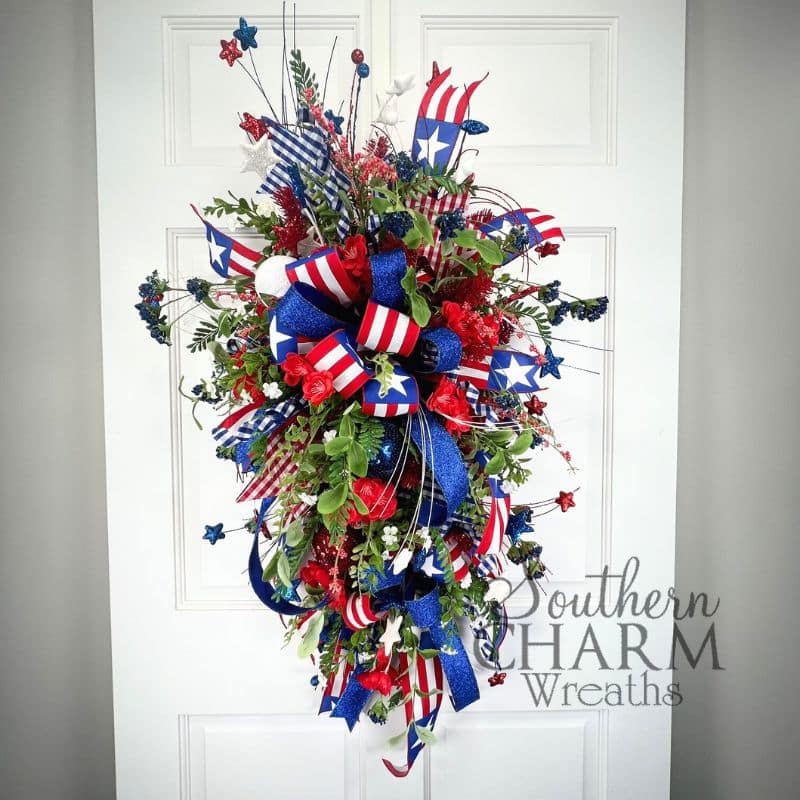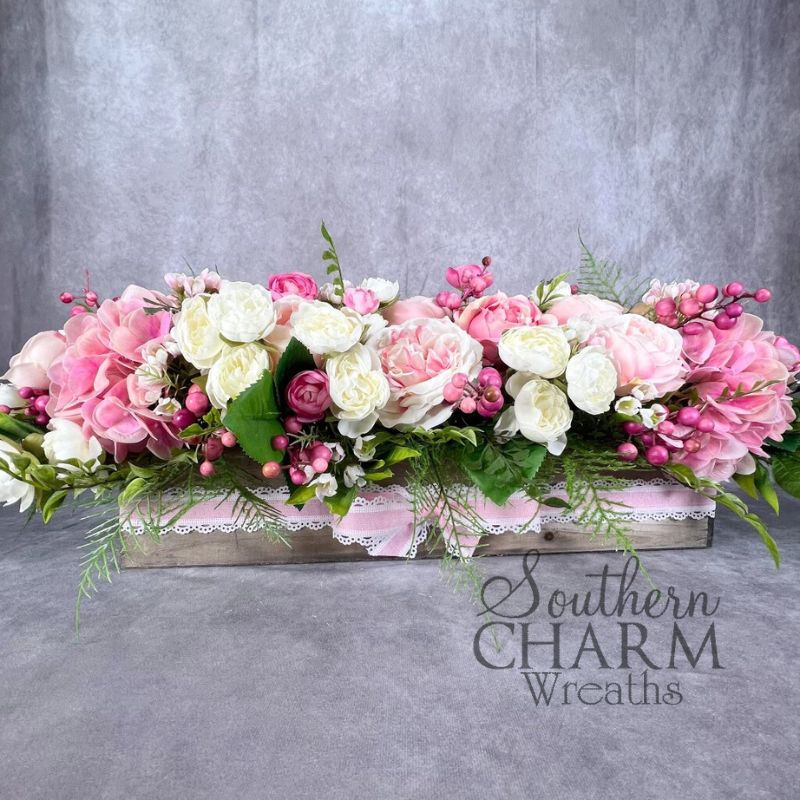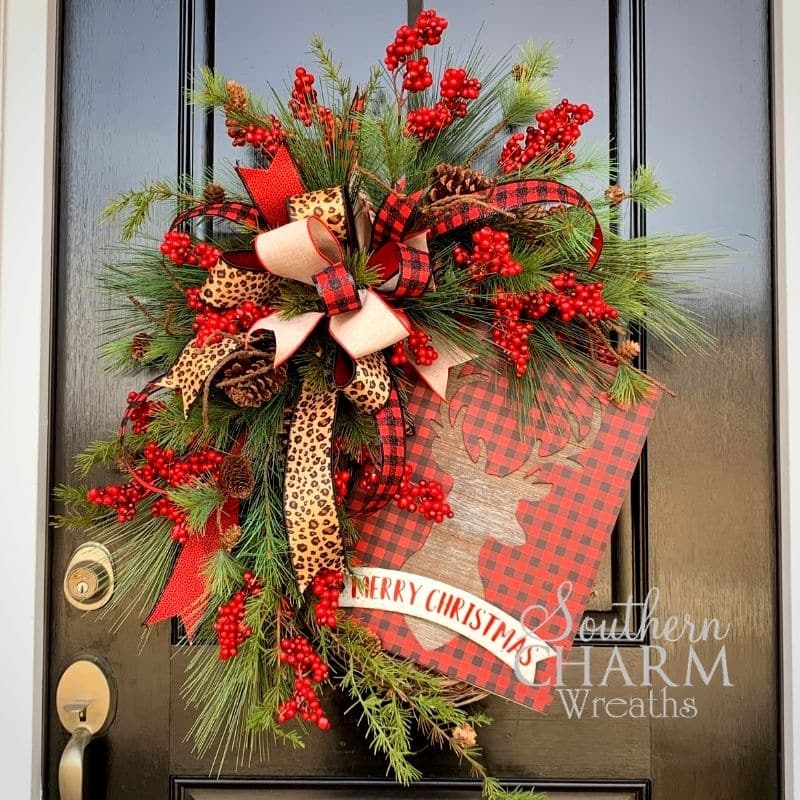10 Silk Flower Arrangement Tips for Beginner Floral Designers
Are you just starting your journey into floral design? Here are my top 10 silk flower arrangement tips to help you create stunning designs.
Silk flowers offer the beauty of fresh blooms with the added benefits of durability and long-lasting color. Whether you’re decorating your home, planning an event, or just exploring a new hobby, silk flowers allow you to create stunning arrangements that can be enjoyed for years.
10 Silk Flower Arrangement Tips
In this post, we’ll cover 10 essential tips to help you get started with silk flower arranging. These beginner-friendly tips will guide you through selecting the right materials, mastering basic design principles, and troubleshooting common issues, all while inspiring you to create beautiful and professional-looking arrangements.
1. Working with Color and Texture
When choosing colors, consider how they will work together in your arrangement. A mix of different textures, like soft petals and leafy greenery, can add depth and interest to your design. For more on color selection, check out our guide on color theory in floral design.
2. Use High-Quality Silk Flowers
High-quality silk flowers are realistic in appearance, with attention to detail in the petals, leaves, and stems. Look for flowers with a natural texture and color, as these will give your arrangement a more lifelike appearance.
3. Refresh Silk Flowers
To make your silk flowers look more lifelike, take the time to fluff and shape each bloom before arranging them.
Gently bend the petals and leaves to open them up and create a more natural appearance. This simple step can make a big difference in how realistic your final arrangement looks.
4. Create a Focal Point
Every arrangement needs a focal point—a flower or cluster of flowers that draws attention. This could be a large bloom, a brightly colored flower, or an unusual shape.
5. The Rule of Thirds
This is a design principle that helps create balanced and visually appealing arrangements. Imagine your arrangement divided into three equal parts vertically and horizontally. Aim to place your focal point at one of the intersections to draw the eye.
6. Experiment with Different Arrangement Styles
Start with a base layer of greenery, then add your focal flowers, and finish with filler flowers. Layering adds depth and makes your arrangement look fuller and more natural.
Vertical Arrangements: Swags, potted or vase arrangements, or topiaries
These are tall and elegant floral designs. For flower arrangements use tall vases and long-stemmed flowers to achieve height. Swags naturally have a vertical layout whether they are mail box swags, front door swags, or lantern swags.
Horizontal Arrangements: Garlands or table lays
These are wider than they are tall and work well on dining tables or mantels. Balance is key here—make sure both sides of the arrangement are symmetrical.
Round and Triangular Shapes: Wreaths, shaped topiaries, trees
Round arrangements are classic and versatile, while triangular designs are dynamic and eye-catching. Experiment with both to see which suits your style.
7. Secure Stems
Use a foam block if needed along with hot glue to secure your picks and stems in place. This will help your arrangement stay intact.
8. Fixing Uneven Arrangements
If your arrangement looks lopsided, adjust the heights of your flowers by trimming stems or adding floral picks for support.
9. Make it Look Natural
Use a mix of greenery and silk flowers to create a natural looking arrangement with different elevations, movements, and textures.
10. Choosing the Right Vase or Container
The right vase or container can enhance your design. Consider the color, texture, and style of the container as it relates to your flowers.
FAQs
What tools do I need?
Wire cutters: For trimming stems to the right length.
Floral tape: To secure stems and create bouquets.
Hot glue gun: For attaching flowers to bases or adding embellishments.
Foam blocks: To anchor your arrangement in a vase or container.
Check out Top 15 Wreath Making Tools Needed for Beginners!
Optional Tools for Advanced Designs:
Floral wire: For shaping and supporting delicate stems.
Floral picks: To add height or create structure within your arrangement.
Lazy Susan: For easy access to all sides of your arrangement as you work.
Silk flower arranging is a rewarding and creative way to bring beauty into your home or event. Don’t be afraid to experiment with different techniques and styles—after all, that’s how you’ll discover what works best for you.
Ready to take your floral design skills to the next level? Consider joining our Wreath Making of the Month Club, where you’ll get exclusive tutorials, tips, and inspiration to keep your creativity blooming all year long. Happy arranging!





Thank you so much Julie, .Amazing content. Thank you for sharing your insights ahd they are very beneficial, I really appreciate it.